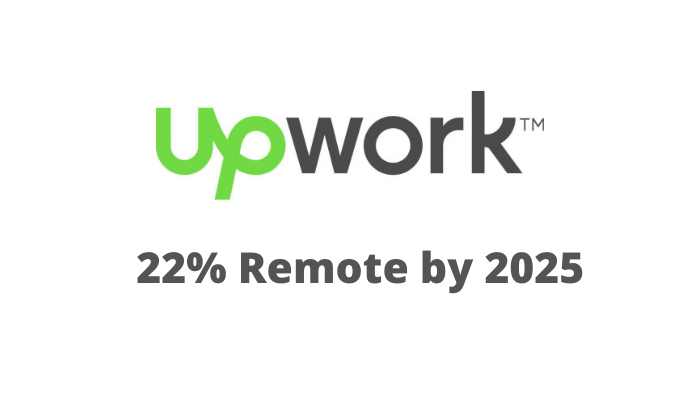Upwork, the world’s largest work marketplace, today released the results of its second 2020 Future Workforce Pulse Report, a survey that examines the hiring habits and sentiment of over 1,000 U.S. hiring managers. The findings reveal that by 2025, 36.2 million Americans will be working remotely, an 87% percent increase from pre-pandemic levels.
“Our research shows the long-lasting impact that remote work and COVID-19 are likely to have on how hiring managers think about their organizations,” says Upwork Chief Economist, Adam Ozimek. “As businesses adapt and learn from this remote work experiment, many are altering their long term plans to accommodate this way of working. On work marketplaces like Upwork, we can already see this shift underway with increased demand for remote professionals.”
The survey comes at a time when remote work is increasingly a mainstay of American professional life, due to the COVID-19 pandemic. While the sudden shift to remote work has been an adjustment, the survey finds hiring managers are seeing the positive benefits to a distributed workforce and plan to continue leveraging remote talent. For additional results visit the full survey page here and to view analysis by Upwork’s Chief Economist Adam Ozimek, read his report here.
Key findings reveal:
- Companies continue to be remote: Nine months into the pandemic, 41.8 percent of the American workforce remains fully remote.
- The number of remote workers in the next five years is expected to be nearly double what it was before COVID-19: By 2025, 36.2 million Americans will be remote, an increase of 16.8 million people from pre-pandemic rates.
- Remote work will continue through 2021: Managers believe that 26.7 percent of the workforce will be fully remote in one year suggesting that individuals will gradually continue to return to the office, but a significant share will remain remote in the near future.
- Companies say remote work is getting easier, not harder, as time goes on: 68 percent of hiring managers say remote work is going more smoothly now than when their company first made the shift at the start of the pandemic.
- Increased productivity and flexibility continue to be key benefits of remote work: 70 percent of hiring managers cite reduction of non-essential meetings, 60 percent cite increased schedule flexibility, and 54 percent cite no commute as aspects of remote work that have worked better than expected.
Additional findings include:
Despite the success of remote work, hiring managers continue to face resourcing issues:
- 58 percent of hiring managers agree that they feel stretched to capacity due to limited resources and support
- 61 percent of teams either lack people or skills to complete all their work
- 52 percent of teams have had to delay or cancel projects due to the lack of available talent
Some are already finding relief with independent professionals:
- 48 percent of hiring managers are working with independent talent today
- 73 percent of managers who see the value in remote work are engaging independent professionals
- The median number of days a position is open for independent professional is half of a FT employee (7 days vs. 14 days)
And more are beginning to unlock the potential of independent professionals as they become more comfortable with remote teams:
- A 10% increase in the share of workers who will fully remote in the long-run is associated with a 1.6% to 2.7% increase in the likelihood of hiring freelancers
About Upwork’s Future Workforce Report
The report was conducted by independent research firm ClearlyRated. This is the fifth year the survey has been conducted. This report uses survey data to understand the impact of remote work in response to COVID-19. More than 1,000 U.S. hiring managers were surveyed through a third-party, independent online sample between October 21, 2020 and November 7, 2020. Overall margin of error of ±3.01% at 95% confidence level.
